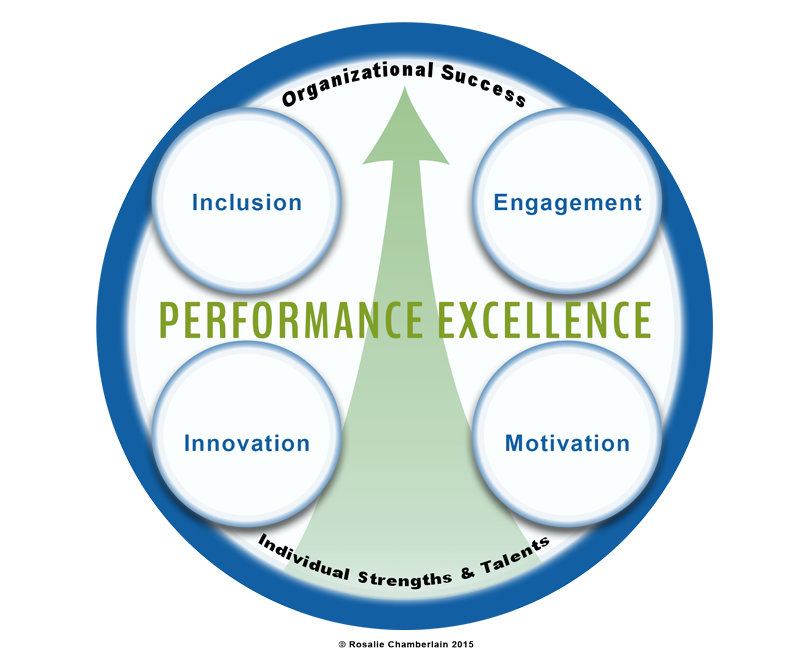Recently, I attended the Human Capital Institute Employee Engagement Conference as a faculty coach for participants, and also had the opportunity to sit in on a few of the talks.
The one that resonated with me most was the program given by Natalie Saiz of NASA, on employee engagement. This is one of the first times that I have seen a company tie inclusion to engagement as a driving force in their organization. NASA was recently voted #1 Best Place to Work in the Federal Government and uses this philosophy to drive engagement to reach innovation.
I have been professing this connection as a driver of performance excellence for years, as my image below suggests.
A company centered around rocket science gets it. And, yet, it is not rocket science.
So, why is inclusion often so difficult?
Partly because it is a mindset based on learnings, biases, experiences, and inertia.
Consider these 2 examples to help fuel your capacity for creating conscious inclusion.
Let’s cut to the chase, each of us came into this world free of judgment; free from judging things and people as less than or better than; free of feeling hate.
Fact: These things were learned. Our primal instincts kicked in to protect us from harm or threat. We had no words to tell our minds what and who were harmful. We were taught or learned this from experience and formed our thoughts accordingly.
Result: These auto judgments became the habits that attached to our physiological reaction – our emotional reactions.
What you can do: Explore and examine any auto-beliefs that are barriers to inclusion. Question the impact of behaviors, whether innocent or intentional.
Behaviors are not set in stone.
Fact: We have a choice to unlearn and create new responses. Also, at our core we are pure potential. Every one of us. But our minds often direct us based on beliefs that cloud our ability to see possibilities for ourselves and others. And, they are not always in line with what is just.
Result: We make choices based on biases and fears.
What you can do: Peel away the layers of protection, separation and ego attachments and make choices focused on creating inclusion. Approach decisions through a lens that values perspectives, similarities and differences and the richness of diversity coming together to create innovation and performance excellence.
It is not rocket science. It is a choice.



